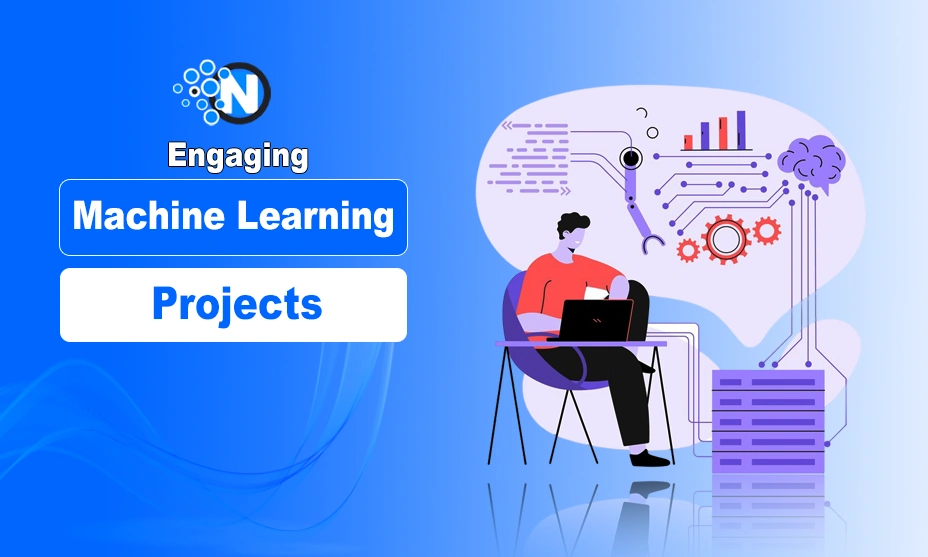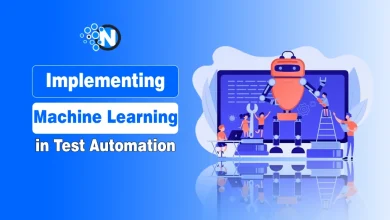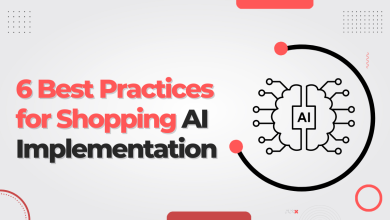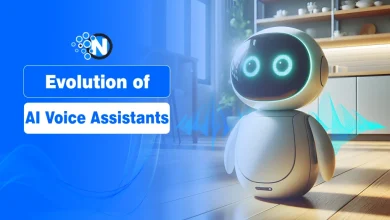25+ Engaging Machine Learning Projects to Build Your Portfolio

Building machine learning projects strengthens your resume by proving your ability to apply AI in real-world scenarios. Companies need professionals who can build real-time applications, automate workflows, and optimize cloud computing systems.
With AI adoption projected to add $15.7 trillion to the global economy by 2030, hands-on experience is a career advantage. Recruiters prioritize candidates who can fine-tune models, process large datasets, and deploy solutions effectively.
This guide offers machine learning projects for beginners and experts, covering model training, deployment, and optimization. If you’re looking for machine learning projects for experts, explore advanced AI challenges like deep learning, transformers, and reinforcement learning.
25+ Best Machine Learning Projects for Students and Professionals
Hands-on machine learning projects are essential for mastering AI and advancing your career in data science. Theoretical knowledge alone isn’t enough because companies seek professionals who can apply algorithms, analyze complex datasets, and build deployable models. From predictive analytics to computer vision, real-world projects enhance your ability to solve business problems using data-driven solutions.
By working on machine learning projects for beginners and experts, you gain practical experience with feature engineering, model tuning, and data preprocessing. These skills are crucial in industries like finance, healthcare, and e-commerce, where AI-driven solutions power decision-making and automation.
Starting with foundational projects helps you build a strong understanding of core Machine Learning concepts before tackling advanced challenges.
Foundational Machine Learning Projects for Students
Beginner-friendly machine learning projects provide a structured way to learn key concepts like data preprocessing, model training, and evaluation through real-world applications. By working with real datasets, you’ll gain hands-on experience in building predictive models and optimizing performance, building confidence and practical ML expertise.
1. Recommendation Systems
Recommendation systems analyze user preferences to provide personalized suggestions. These are widely used in e-commerce, streaming platforms, and online learning portals. This project helps you understand how to process user behavior data and build models that enhance user engagement.
Prerequisites: Basic knowledge of Python, machine learning algorithms, and data preprocessing.
Technology Stack and Tools Used:
- Python, Pandas, NumPy
- Scikit-learn, TensorFlow, or PyTorch
- Collaborative filtering, content-based filtering
- APIs for data retrieval (e.g., MovieLens dataset, e-commerce datasets)
Key Skills Gained:
- Data collection and preprocessing
- Implementing collaborative and content-based filtering
- Model evaluation using precision and recall
- Optimizing recommendations for better accuracy
Examples of Real-World Scenarios:
- Netflix and Spotify’s recommendation algorithms
- Amazon and Flipkart’s personalized product recommendations
- Coursera and Udemy course recommendations
Challenges and Future Scope:
- Handling cold-start problems for new users
- Scaling recommendation systems for large datasets
- Incorporating deep learning for better recommendations
Enhance your expertise with the Post Graduation in Data Science program by enrolling in industry-focused training. This program provides in-depth knowledge of data analytics, machine learning, and AI applications, equipping you with the practical skills needed to excel in data science careers.
2. Chatbot
Chatbots automate conversations using Natural Language Processing (NLP). This project involves training a chatbot to understand and respond to user queries, which make it ideal for customer support and virtual assistants.
Prerequisites: Basic NLP concepts, Python programming, and familiarity with chatbot frameworks.
Technology Stack and Tools Used:
- Python, NLTK, SpaCy
- TensorFlow, Rasa, Dialogflow
- Flask/Django for deployment
- Web scraping for building domain-specific responses
Key Skills Gained:
- Implementing NLP for intent recognition and response generation
- Training chatbots using machine learning and deep learning
- Integrating chatbots with messaging platforms (WhatsApp, Telegram)
Examples of Real-World Scenarios:
- Customer support bots in banking and e-commerce
- AI assistants like Siri, Alexa, and Google Assistant
- FAQ bots for websites and apps
Challenges and Future Scope:
- Improving context awareness and response accuracy
- Multilingual chatbot development
- Integrating AI-powered voice assistants
3. Fake News Detection
With the spread of misinformation, detecting fake news has become crucial. This project uses machine learning models to classify news articles as real or fake based on linguistic patterns and source credibility.
Prerequisites: Basic NLP, classification algorithms, and dataset handling.
Technology Stack and Tools Used:
- Python, Scikit-learn, TensorFlow
- NLP libraries (NLTK, SpaCy)
- TF-IDF, Word2Vec for text vectorization
- Dataset: Fake News Challenge (FNC-1), LIAR dataset
Key Skills Gained:
- Feature extraction from text data
- Implementing classification models (Logistic Regression, SVM, LSTM)
- Analyzing model performance with precision, recall, F1-score
Examples of Real-World Scenarios:
- Social media platforms detecting misinformation and spam
- Fact-checking tools for journalists
- AI-powered news aggregators ensuring content credibility
Challenges and Future Scope:
- Handling bias in training data
- Improving accuracy for multi-class classification
- Developing real-time fake news detection systems
Build a strong foundation in classification techniques! Learn how logistic regression powers fake news detection with Logistic Regression for Beginners by upGrad—start for free today!
4. Sentiment Analysis
Sentiment analysis classifies text data into positive, negative, or neutral sentiments, helping businesses understand customer feedback. This project applies machine learning and NLP techniques to extract emotions from text.
Prerequisites: Basic knowledge of NLP, supervised learning, and text preprocessing.
Technology Stack and Tools Used:
- Python, Scikit-learn, TensorFlow
- NLP libraries: NLTK, VADER, TextBlob
- Datasets: IMDb Reviews, Twitter Sentiment Analysis
- APIs for social media data extraction (Tweepy, Reddit API)
Key Skills Gained:
- Text preprocessing and feature extraction
- Implementing classification models (Naive Bayes, LSTM, BERT)
- Visualizing sentiment trends over time
Examples of Real-World Scenarios:
- Monitoring brand sentiment on social media
- Analyzing customer feedback in product reviews
- Assessing public opinion on political and social issues
Challenges and Future Scope:
- Handling sarcasm and complex emotions
- Enhancing sentiment detection for multi-lingual texts
- Applying deep learning for context-aware sentiment analysis
5. MNIST Digit Classification
The MNIST dataset is a fundamental benchmark in deep learning, consisting of handwritten digit images (0-9). This project focuses on building a convolutional neural network (CNN) to classify digits accurately. It’s a great starting point for understanding image processing and neural networks.
Prerequisites: Python, basic deep learning concepts, and familiarity with neural networks.
Technology Stack and Tools Used:
- Python, TensorFlow/Keras, PyTorch
- OpenCV for image processing
- CNN architecture for classification
- MNIST dataset from TensorFlow/Kaggle
Key Skills Gained:
- Image preprocessing and augmentation
- Implementing CNN models for digit recognition
- Training and evaluating deep learning models
Examples of Real-World Scenarios:
- Handwritten digit recognition in banking (check processing)
- Automatic form reading in government applications
- Digit classification in postal services
Challenges and Future Scope:
- Improving accuracy with advanced architectures (ResNet, EfficientNet)
- Extending the model to recognize handwritten letters and symbols
- Deploying the model as a web or mobile application
Enhance your expertise with the Post Graduation in Data Science program by enrolling in the Fundamentals of Deep Learning and Neural Networks course. This course offers in-depth knowledge of neural networks, model training, and AI applications, equipping you with practical skills that are crucial for data science careers.
6. Movie Recommendation Engine
A movie recommendation system suggests films based on user preferences using machine learning. This project covers both collaborative filtering and content-based filtering, helping you build a personalized recommendation model.
Prerequisites: Python, data manipulation, and familiarity with ML models.
Technology Stack and Tools Used:
- Python, Pandas, NumPy
- Scikit-learn, TensorFlow
- Collaborative filtering, matrix factorization techniques
- MovieLens dataset for training
Key Skills Gained:
- Implementing recommendation algorithms
- Data cleaning and feature engineering
- Measuring model performance using RMSE and precision-recall
Examples of Real-World Scenarios:
- Netflix and Amazon Prime’s personalized movie suggestions
- YouTube’s video recommendation system
- Spotify’s music recommendation algorithms
Challenges and Future Scope:
- Handling cold-start problems for new users
- Improving recommendations with deep learning (autoencoders, transformers)
- Real-time recommendation engines using big data technologies
7. Predict House Prices
House price prediction is a regression problem where machine learning models analyze location, square footage, and market trends to estimate property values. This project teaches regression techniques crucial for real estate analytics.
Prerequisites: Python, regression models, and exploratory data analysis (EDA).
Technology Stack and Tools Used:
- Python, Scikit-learn, XGBoost
- Pandas, NumPy for data handling
- Feature selection techniques (one-hot encoding, scaling)
- Datasets: Zillow, Kaggle Housing Price Dataset
Key Skills Gained:
- Implementing linear regression, decision trees, and ensemble models
- Handling missing values and feature selection
- Interpreting model outputs for business decisions
Examples of Real-World Scenarios:
- Real estate agencies predicting property market trends
- Home valuation platforms like Zillow and Redfin
- Mortgage companies assessing loan risks
Challenges and Future Scope:
- Enhancing accuracy with deep learning models (ANNs, CNNs for image-based valuation)
- Integrating real-time market trends and economic factors
- Deploying the model in web-based real estate platforms
8. Loan Prediction
Financial institutions use loan prediction models to assess creditworthiness and minimize risks. This project involves classification algorithms to determine loan approval based on income, credit score, and employment status.
Prerequisites: Python, classification algorithms, and feature engineering.
Technology Stack and Tools Used:
- Python, Scikit-learn, XGBoost
- Logistic Regression, Random Forest, SVM
- Datasets: Kaggle Loan Prediction Dataset, bank loan data
Key Skills Gained:
- Feature engineering for financial data
- Implementing classification models (Logistic Regression, Random Forest, XGBoost)
- Evaluating models using ROC-AUC, confusion matrix
Examples of Real-World Scenarios:
- Banks assessing loan eligibility for customers
- Credit scoring models in fintech companies
- AI-powered risk assessment for microloans
Challenges and Future Scope:
- Handling imbalanced datasets in financial data
- Improving fraud detection using deep learning
- Integrating real-time credit score analysis
9. Fraud Detection
Fraud detection models help financial institutions identify suspicious transactions and prevent fraudulent activities. This project involves building a classification model using historical transaction data.
Prerequisites: Python, classification algorithms, and data preprocessing.
Technology Stack and Tools Used:
- Python, Pandas, NumPy
- Scikit-learn, XGBoost, LightGBM
- Fraud detection datasets (Kaggle, financial institutions)
- Anomaly detection techniques (Isolation Forest, Autoencoders)
Key Skills Gained:
- Identifying fraud patterns in transaction data
- Implementing supervised and unsupervised anomaly detection
- Evaluating models using precision, recall, and F1-score
Examples of Real-World Scenarios:
- Credit card fraud detection in banking systems
- Detecting insurance fraud using AI models
- Identifying fake transactions in e-commerce platforms
Challenges and Future Scope:
- Handling imbalanced datasets with resampling techniques
- Enhancing accuracy using deep learning for fraud detection
- Implementing real-time fraud detection in payment gateways
10. Forecast Sales
Sales forecasting helps businesses predict future demand and revenue trends using historical data. This project applies time series forecasting techniques to improve inventory and financial planning.
Prerequisites: Python, time-series models, and data visualization.
Technology Stack and Tools Used:
- Python, Pandas, NumPy
- Scikit-learn, Facebook Prophet, ARIMA
- Visualization tools (Matplotlib, Seaborn)
- Datasets: Retail sales data, e-commerce sales records
Key Skills Gained:
- Applying time-series models (ARIMA, LSTM, Prophet)
- Feature engineering for sales prediction
- Handling seasonality and trend components in data
Examples of Real-World Scenarios:
- Demand forecasting for retail and supply chain industries
- Predicting sales trends in e-commerce platforms
- Optimizing inventory management for warehouses
Challenges and Future Scope:
- Improving accuracy with deep learning models (LSTM, Transformer networks)
- Handling sudden market fluctuations and external economic factors
- Real-time sales prediction dashboards for businesses
11. Face Recognition
Face recognition is widely used for security, authentication, and surveillance. This project involves training a deep learning model to recognize and classify faces using convolutional neural networks (CNNs). Prerequisites: Python, deep learning basics, OpenCV.
Technology Stack and Tools Used:
- Python, TensorFlow/Keras, OpenCV
- FaceNet, DeepFace, Dlib
- Pretrained models (VGGFace, ResNet)
- Face datasets: Labeled Faces in the Wild (LFW), CelebA
Key Skills Gained:
- Implementing face detection and recognition algorithms
- Training and evaluating deep learning models
- Feature extraction using CNN architectures
Examples of Real-World Scenarios:
- Facial recognition for secure authentication (iPhone Face ID, banking apps)
- Surveillance systems in law enforcement and public security
- AI-powered photo tagging on social media
Challenges and Future Scope:
- Enhancing model accuracy for low-light and occluded images
- Addressing privacy and ethical concerns in facial recognition
- Implementing real-time face recognition in mobile apps
12. Identify Emotions
Emotion detection analyzes text, speech, or facial expressions to classify human emotions. This project applies Natural Language Processing (NLP) or computer vision to detect emotions in social media comments, customer feedback, or images.
Prerequisites: Python, NLP, or deep learning concepts.
Technology Stack and Tools Used:
- Python, TensorFlow/Keras, OpenCV (for facial emotion detection)
- NLP libraries: NLTK, SpaCy, BERT (for text-based emotion detection)
- Datasets: FER2013 (Facial Expression Recognition), Twitter Sentiment Analysis
Key Skills Gained:
- Implementing emotion classification using NLP or CNNs
- Training models to detect happiness, sadness, anger, and other emotions
- Analyzing sentiment trends in text data
Examples of Real-World Scenarios:
- Customer feedback analysis for brand sentiment monitoring
- Emotion-based chatbots for mental health support
- AI-powered emotion recognition in video conferencing tools
Challenges and Future Scope:
- Handling complex emotions and sarcasm in text-based analysis
- Improving accuracy for multilingual emotion detection
- Integrating emotion recognition in AI-driven customer service platforms
13. Image Captioning
Image captioning generates descriptive text for images using a combination of computer vision and NLP. This project trains a model to describe image content automatically.
Prerequisites: Python, deep learning, CNNs, and sequence models.
Technology Stack and Tools Used:
- Python, TensorFlow/Keras, PyTorch
- Pretrained models (VGG16, InceptionV3)
- NLP models: LSTMs, Transformers
- Datasets: COCO Captioning Dataset
Key Skills Gained:
- Combining computer vision with NLP techniques
- Training encoder-decoder architectures for caption generation
- Implementing image feature extraction and sequence modeling
Examples of Real-World Scenarios:
- AI-powered photo descriptions for visually impaired users
- Automated image tagging in digital asset management
- Smart image search using captions and keywords
Challenges and Future Scope:
- Improving context understanding for complex images
- Enhancing accuracy using attention-based Transformers (like GPT-4, BERTVision)
- Deploying real-time captioning models for social media platforms
If you’re looking to dive deeper into advanced projects like image captioning and refine your skills in deep learning and AI, the Post Graduate Certificate in Data Science & AI (Executive) is the perfect next step. As industries increasingly demand AI-driven solutions, many professionals face challenges in keeping up with rapid advancements and real-world applications.
Building foundational machine learning projects strengthens your core skills in data preprocessing, model training, and evaluation. As you gain confidence, it’s time to tackle more complex challenges that require deeper analysis and advanced techniques.
Intermediate Machine Learning Projects for Aspiring Students
Intermediate machine learning projects bridge the gap between beginner and expert levels by introducing real-world datasets, feature engineering, and model optimization techniques. These projects involve handling larger datasets, fine-tuning algorithms, and deploying models, helping you develop skills crucial for industry applications.
1. Market Basket Analysis
Market basket analysis identifies product purchase patterns to improve cross-selling strategies in retail and e-commerce. This project applies association rule mining to discover frequently bought item combinations.
Prerequisites: Python, basic statistics, and data preprocessing.
Technology Stack and Tools Used:
- Python, Pandas, NumPy
- Apriori, FP-Growth algorithms
- Datasets: Kaggle retail transaction datasets
Key Skills Gained:
- Implementing association rule learning (Apriori, FP-Growth)
- Understanding customer buying behavior
- Optimizing product recommendations in retail
Examples of Real-World Scenarios:
- Amazon’s “frequently bought together” recommendations
- Grocery store layout optimization based on purchasing patterns
- Bundling strategies for online marketplaces
Challenges and Future Scope:
- Handling large transaction datasets efficiently
- Enhancing recommendation models with deep learning
- Integrating real-time basket analysis for e-commerce
2. Object Detection
Object detection models identify and locate objects in images and videos. This project involves training a deep learning model to detect objects using convolutional neural networks (CNNs).
Prerequisites: Python, OpenCV, deep learning basics.
Technology Stack and Tools Used:
- Python, TensorFlow, PyTorch
- YOLO, Faster R-CNN, SSD models
- Datasets: COCO, Open Images
Key Skills Gained:
- Implementing CNN-based object detection models
- Training deep learning models on image datasets
- Real-time object recognition using YOLO/Faster R-CNN
Examples of Real-World Scenarios:
- Autonomous vehicle perception systems
- Surveillance cameras for security monitoring
- AI-powered inventory tracking in warehouses
Challenges and Future Scope:
- Improving model accuracy in low-light or cluttered environments
- Real-time object detection on edge devices (IoT, mobile phones)
- Expanding to multi-object tracking in video streams
3. Speech Emotion Recognition
Speech emotion recognition (SER) detects emotions from audio recordings, helping improve human-computer interaction. This project applies signal processing and deep learning to classify emotions.
Prerequisites: Python, NLP, deep learning basics.
Technology Stack and Tools Used:
- Python, Librosa, TensorFlow
- Feature extraction (MFCC, Mel-spectrogram)
- Datasets: RAVDESS, EmoDB
Key Skills Gained:
- Audio feature extraction and analysis
- Implementing LSTM and CNN models for audio classification
- Speech signal processing for emotion recognition
Examples of Real-World Scenarios:
- AI-powered voice assistants (Alexa, Siri) detecting user mood
- Call center emotion analytics for customer service improvement
- Emotion-aware AI chatbots for mental health support
Challenges and Future Scope:
- Handling accent and language variations
- Improving emotion detection accuracy with deep learning
- Integrating SER into real-time AI assistants
4. Wine Quality Prediction
This project predicts wine quality based on chemical composition and sensory data using machine learning models. It’s a classic regression and classification problem for data science learners.
Prerequisites: Python, regression models, and data preprocessing.
Technology Stack and Tools Used:
- Python, Scikit-learn
- Decision Trees, Random Forest, SVM
- Dataset: UCI Wine Quality Dataset
Key Skills Gained:
- Data preprocessing and feature engineering
- Training classification and regression models
- Understanding feature importance in predictions
Examples of Real-World Scenarios:
- Automated wine grading in quality control systems
- Predicting beverage quality in food industry automation
- Recommending wine based on chemical and taste factors
Challenges and Future Scope:
- Enhancing prediction accuracy with deep learning
- Expanding to multi-label classification for wine types
- Creating a wine recommendation system
5. Human Activity Recognition
Human Activity Recognition (HAR) classifies physical activities (walking, running, sitting) using sensor data from smartphones or wearable devices. This project applies time-series classification techniques.
Prerequisites: Python, deep learning, and time-series analysis.
Technology Stack and Tools Used:
- Python, TensorFlow, Scikit-learn
- LSTM, CNN for time-series classification
- Dataset: UCI HAR Dataset (smartphone accelerometer data)
Key Skills Gained:
- Sensor data preprocessing and feature extraction
- Implementing deep learning for time-series analysis
- Analyzing human movement patterns
Examples of Real-World Scenarios:
- Fitness tracking apps (Fitbit, Apple Health)
- Elderly monitoring systems for fall detection
- AI-driven rehabilitation and physiotherapy analysis
Challenges and Future Scope:
- Improving accuracy for complex activity recognition
- Real-time wearable AI-powered health monitoring
- Extending HAR to gesture and posture recognition
6. Predict Stock Prices
Stock price prediction uses historical market data and machine learning models to forecast future trends. This project applies time-series forecasting techniques.
Prerequisites: Python, time-series models, and financial data analysis.
Technology Stack and Tools Used:
- Python, Pandas, NumPy
- LSTM, ARIMA, Facebook Prophet
- Stock market datasets (Yahoo Finance, Alpha Vantage API)
Key Skills Gained:
- Applying time-series forecasting models
- Understanding financial market trends and technical indicators
- Evaluating prediction accuracy with MAE, RMSE metrics
Examples of Real-World Scenarios:
- AI-driven stock market forecasting in trading platforms
- Hedge funds using predictive models for investment strategies
- Stock price movement analysis for retail investors
Challenges and Future Scope:
- Handling market volatility and external economic events
- Enhancing predictions using deep learning (Transformer models, GANs)
- Developing AI-powered automated trading bots
As you advance in machine learning, working on intermediate projects helps you handle larger datasets and optimize models. Now, it’s time to tackle advanced machine learning projects that require deep learning, complex algorithms, and real-world deployment.
Advanced ML Projects for Beginners and Professionals
Advanced projects test your expertise in deep learning, reinforcement learning, and large-scale AI systems. If you’re focusing on machine learning projects for experts, explore GANs, transformers, and automated ML pipelines to enhance your portfolio for AI research and industry roles.
You’ll explore innovative techniques like GANs, transformers, and automated ML pipelines. If you’re aiming for AI research, industry roles, or competitive applications, these projects will sharpen your skills and enhance your portfolio.
1. Churn Prediction
Customer churn prediction helps businesses identify users likely to stop using a service based on behavioral patterns. This project involves building a classification model to predict churn, improving customer retention strategies.
Prerequisites: Python, classification algorithms, and data preprocessing.
Technology Stack and Tools Used:
- Python, Pandas, NumPy
- Scikit-learn, XGBoost, TensorFlow
- Datasets: Telco Customer Churn, Kaggle datasets
Key Skills Gained:
- Data preprocessing and feature engineering for customer behavior analysis
- Implementing classification models (Logistic Regression, Random Forest, XGBoost)
- Evaluating models with ROC-AUC, confusion matrix
Examples of Real-World Scenarios:
- Subscription-based companies (Netflix, Spotify) predicting user churn
- Telecom providers reducing customer attrition
- Banking and insurance firms identifying potential drop-offs
Challenges and Future Scope:
- Handling class imbalance in churn datasets
- Enhancing model accuracy using deep learning and advanced feature selection
- Developing real-time churn prediction dashboards
2. Identify Irises (Iris Classification)
Iris classification is a classic machine learning problem that categorizes flowers into three species using supervised learning. This project is great for beginners looking to understand classification algorithms.
Prerequisites: Python, Scikit-learn, and basic ML concepts.
Technology Stack and Tools Used:
- Python, Scikit-learn, Pandas
- Classification algorithms: Decision Tree, KNN, SVM
- Dataset: Iris Dataset (built-in Scikit-learn dataset)
Key Skills Gained:
- Understanding classification models and feature selection
- Implementing data visualization techniques
- Applying model evaluation metrics like accuracy, precision, recall
Examples of Real-World Scenarios:
- Plant classification in agriculture
- Automated botanical species identification
- Pattern recognition in biological data
Challenges and Future Scope:
- Expanding classification models for multi-class datasets
- Integrating deep learning for image-based iris identification
- Deploying models in mobile applications for real-time plant recognition
3. Stock Price Prediction
(Similar to previous stock prediction project, but using advanced deep learning techniques.)
This advanced stock price prediction project leverages deep learning models like LSTMs and Transformers to forecast future prices based on historical market data.
Prerequisites: Python, time-series forecasting, deep learning.
Technology Stack and Tools Used:
- Python, TensorFlow, Keras
- LSTM, GRU, Transformer models
- Datasets: Yahoo Finance, Quandl API
Key Skills Gained:
- Implementing deep learning for time-series forecasting
- Using technical indicators (MACD, RSI) for financial modeling
- Evaluating model performance using MSE, RMSE
Examples of Real-World Scenarios:
- Algorithmic trading and AI-powered stock analysis
- Hedge funds and investment firms optimizing portfolios
- Retail investor platforms providing AI-driven insights
Challenges and Future Scope:
- Handling high volatility and external financial events
- Improving long-term forecasting using Reinforcement Learning
- Developing real-time predictive trading bots
4. Breast Cancer Classification
This project applies machine learning to detect breast cancer from medical data, helping in early diagnosis.
Prerequisites: Python, classification models, medical dataset handling.
Technology Stack and Tools Used:
- Python, Scikit-learn, TensorFlow
- Classification algorithms: Random Forest, SVM, Deep Learning
- Dataset: Wisconsin Breast Cancer Dataset
Key Skills Gained:
- Understanding biomedical dataset preprocessing
- Implementing classification models for disease detection
- Evaluating model accuracy with precision-recall curves
Examples of Real-World Scenarios:
- AI-driven cancer detection for early screening
- Medical imaging analysis for automated diagnosis
- Enhancing accuracy in clinical decision-making
Challenges and Future Scope:
- Improving model interpretability for clinical acceptance
- Enhancing diagnosis using CNNs on mammogram images
- Deploying real-world AI healthcare applications
5. Credit Card Default Prediction
Banks and financial institutions use credit card default prediction models to assess risk and manage credit lending.
Prerequisites: Python, classification algorithms, financial dataset analysis.
Technology Stack and Tools Used:
- Python, Scikit-learn, XGBoost
- Logistic Regression, Random Forest, SVM
- Dataset: UCI Credit Card Default Dataset
Key Skills Gained:
- Feature engineering for financial risk assessment
- Implementing classification models for predicting defaults
- Evaluating risk prediction models using AUC-ROC, confusion matrix
Examples of Real-World Scenarios:
- Banking institutions assessing loan risk
- Credit bureaus analyzing creditworthiness
- Fintech companies optimizing lending decisions
Challenges and Future Scope:
- Addressing bias in financial datasets
- Enhancing fraud detection with AI-driven insights
- Deploying automated credit risk assessment systems
6. Disease Outbreak Prediction
AI-driven disease outbreak prediction analyzes historical health data, climate conditions, and population movements to forecast disease spread.
Prerequisites: Python, time-series forecasting, epidemiology data.
Technology Stack and Tools Used:
- Python, TensorFlow, Scikit-learn
- LSTM, Time-series analysis
- Dataset: WHO disease datasets, CDC data
Key Skills Gained:
- Epidemiological data analysis
- Implementing AI-driven forecasting models
- Understanding public health AI applications
Examples of Real-World Scenarios:
- COVID-19 and flu outbreak forecasting
- Epidemiology modeling in health organizations
- AI-powered early warning systems for pandemics
Challenges and Future Scope:
- Integrating real-time healthcare data sources
- Enhancing model accuracy with genetic sequencing data
- Developing AI models for global health risk mitigation
7. Customer Lifetime Value Prediction
Customer Lifetime Value (CLV) prediction helps businesses estimate the total revenue a customer will generate over their relationship with the company.
Prerequisites: Python, regression models, customer behavior analysis.
Technology Stack and Tools Used:
- Python, Pandas, Scikit-learn
- XGBoost, Random Forest, LSTM
- Datasets: E-commerce transaction data
Key Skills Gained:
- Customer segmentation and behavioral modeling
- Implementing predictive analytics for revenue estimation
- Understanding business intelligence applications in marketing
Examples of Real-World Scenarios:
- E-commerce companies optimizing marketing spend
- Subscription-based businesses maximizing revenue retention
- Retail firms using CLV for personalized promotions
Challenges and Future Scope:
- Handling seasonal variations in customer spending
- Improving predictions with deep learning techniques
- Deploying CLV prediction models in real-time marketing automation
Working on advanced machine learning projects helps you master complex techniques and build industry-ready solutions. However, with so many project options available, selecting the right one can be overwhelming. Choosing projects that match your skill level and career goals ensures steady progress and meaningful learning.
How to Choose the Perfect Machine Learning Projects for Your Growth Path?
Finding the right machine learning projects is crucial for accelerating your learning and career growth. A well-chosen project challenges you without being too difficult, helping you apply concepts effectively.
- Assess Your Skill Level: Beginners should focus on structured datasets and classic algorithms, while advanced learners can explore deep learning and real-world applications.
- Align with Your Career Goals: If you’re aiming for a data science role, work on projects involving NLP, predictive modeling, or big data analytics.
- Choose Practical and Scalable Projects: Prioritize projects that solve real-world problems and can be expanded with more data or advanced techniques.
- Explore Industry-Relevant Technologies: Work with cloud computing, AI-powered automation, or deployment tools to gain hands-on experience in production environments.
- Balance Learning and Application: Pick projects that reinforce core concepts while introducing new challenges, ensuring continuous growth.
Final Thoughts
In this blog, I have mentioned a diverse range of machine learning projects, from foundational tasks like building recommendation systems to more complex challenges like fraud detection and stock price prediction.
These projects not only deepen your understanding of machine learning but also prepare you to tackle real-world problems. Whether you’re just starting or looking to refine your skills, the knowledge gained here will help you advance in the world of AI and data science.
If you’re ready to take the next step, explore the Post Graduation in Data Science program to further hone your skills with tailored learning opportunities. Get free personalized counseling from upGrad and receive expert guidance to help you choose the right path for your career. Visit your nearest upGrad center to find out how this program can take your machine learning expertise to new heights.
FAQs
Q: How do I select a machine learning project that matches my experience level?
A: Beginners should start with structured datasets and simple models. Intermediate learners can explore real-world applications and model optimization.
Q: Can I work on advanced machine learning projects without a formal degree?
A: Yes, hands-on experience and a strong portfolio matter more than a degree. Contribute to open-source projects, Kaggle competitions, and GitHub repositories.
Q: How can I ensure my machine learning projects are relevant to industry needs?
A: Focus on healthcare, finance, or automation projects. Use datasets from Kaggle, UCI, or Google Dataset Search. Implement MLOps, cloud deployment, and ethical AI for real-world impact.
Q: What are the common pitfalls to avoid when choosing a machine learning project?
A: Avoid projects with insufficient data or unrealistic complexity. Choose problems with clear goals and structured datasets. Ensure your model is interpretable and scalable for practical use.
Q: How important is domain knowledge in selecting a machine learning project?
A: Domain knowledge improves feature selection, model accuracy, and real-world applicability. It helps align AI solutions with business objectives for better decision-making.
Q: Should I prioritize projects with readily available datasets?
A: Yes, public datasets let you focus on modeling instead of data collection. Use platforms like Kaggle, UCI, and Google Dataset Search for quality datasets.
Q: How can I incorporate the latest machine learning trends into my projects?
A: Use transformers, GANs, or federated learning for cutting-edge AI. Leverage cloud computing (AWS, GCP, Azure) for scalable ML workflows. Follow research papers and GitHub repositories.
Q: What role does collaboration play in machine learning projects?
A: Collaboration improves problem-solving and model validation. Contribute to open-source projects, research groups, or Kaggle teams to gain diverse insights.
Q: How do I balance theoretical learning and practical application in my projects?
A: Apply theoretical concepts to real datasets through small projects. Read research papers while experimenting with models. Use iterative learning and debugging.
Q: Can participating in competitions enhance my machine learning skills?
A: Yes, Kaggle and AI hackathons improve problem-solving and feature engineering. They also help build a strong portfolio and industry connections.
Q: How do I showcase my machine learning projects to potential employers?
A: Document code, datasets, and results on GitHub. Write case studies on LinkedIn or Medium. Deploy models using Flask, Streamlit, or cloud services.




